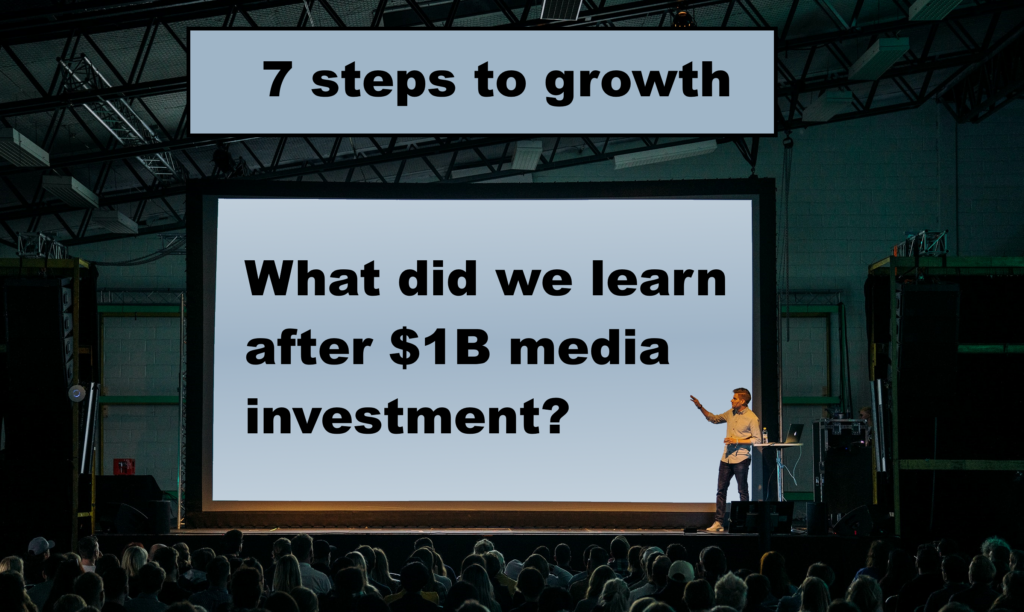
We’ve identified 3 main patterns that enable companies to scale & grow fast.
- Customer Journey ≠ Funnel
- Most efficient method to scale is by using Persona-based marketing
- These Marketing misconceptions prevent companies from scaling profitably:
–“More media = growth”
–“Ab test is king”
–“Marketing funnel is linear, awareness-consideration-conversion-loyalty”
–“Funnels are equal to all potential customers”
–“Business growth always depends on HR growth”
Based on these fundamental beliefs, we’ve discovered an amazing methodology that achieves growth while maximizing profitability…
“We must challenge our knowledge daily”

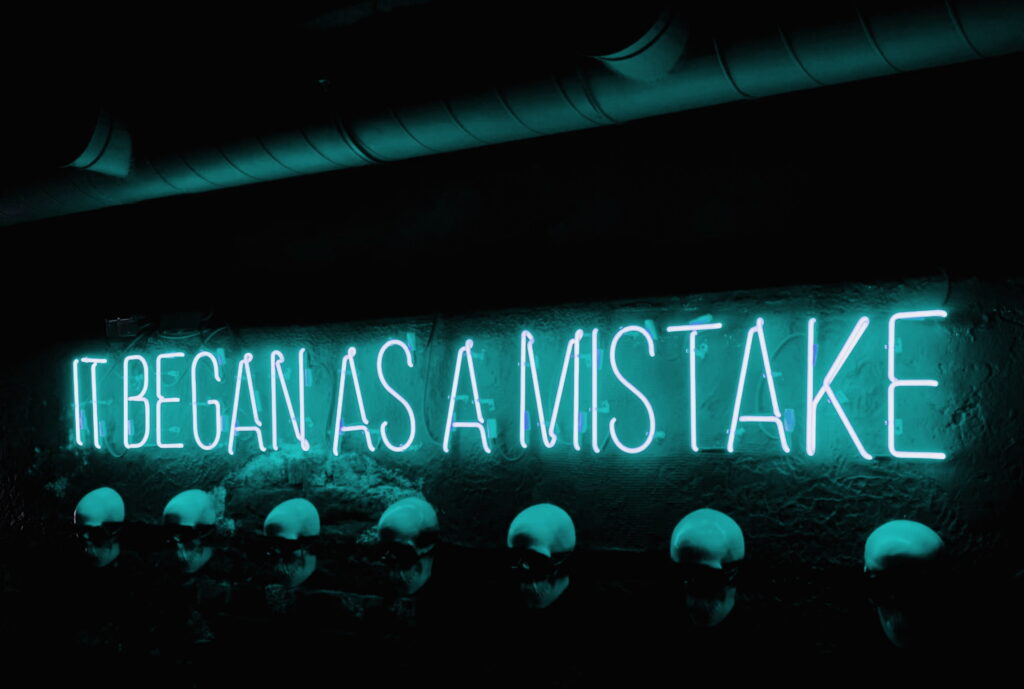
“Previous mistakes prevent us from making new ones”
“All our clients are unique“

To share our discoveries with you, we’ve laid out 7 steps that are easy to follow:
Step #1: Persona-based marketing is King
Step #2: Generate a unique Customer Journey per user for emotional burning
Step #3: The right questions are the key for growth
Step #4: Forget the status quo, focus on the goal
Step #5: Build a Satisfaction on demand machine
Step #6: It’s all about the voice of your customers and how you deliver them value
Step #7: Smart data insights are the key for growth
Let´s dive deep

–Misconception: “Ab test is king”
A/B test is not enough, while this strategy is based on the “winner takes it all” approach, this means that the loser loses all.
Example: If a specific popup version is 15% better for 30% of the users you’ve tested, then you will “sacrifice” and apply it for all users, this means that even if that version is worst for 40% of the users, you will still display only that specific version to them.
We should talk about personalization rather than using old A/B test strategies that waste time and money.
Personalization surgically presents your brand to potential customers & clients, with the most relevant variant for each step of the conversion flow.
For creating a profitable journey based on personas, the following steps are most efficient:
1: Every brand must identify up to 5 personas (customers behavioral & demographic groups).
2: Define needs/pains and challenges per persona.
3: Identify each persona product dimensions*, focusing on their belief system that empower each one of them.
*Product dimensions: A winner journey strategy must be based on Christiaan Maats 4th dimension understanding:
-Utilitarian dimension
-Cultural style Dimension
-Emotional Attitude Dimension
-Belief/Purpose
Dimension in which all client facing messaging, must be targeting the customers belief core, generating strong empathy.
4: Align brands solution per persona.
5: Create a value-based incremental conversion flow.
6: Create a persona-based customer journey (acquisition/nurturing/conversion/retention)
7: Present each persona in each journey phase with their own individual messaging and offering, based on their belief system.
8: Think variants, generate daily variants per persona and let AI decide when, where & to whom.
“Persona based” is the idea that there are no winning offers, but unique clients with different behavior and emotional experiences.
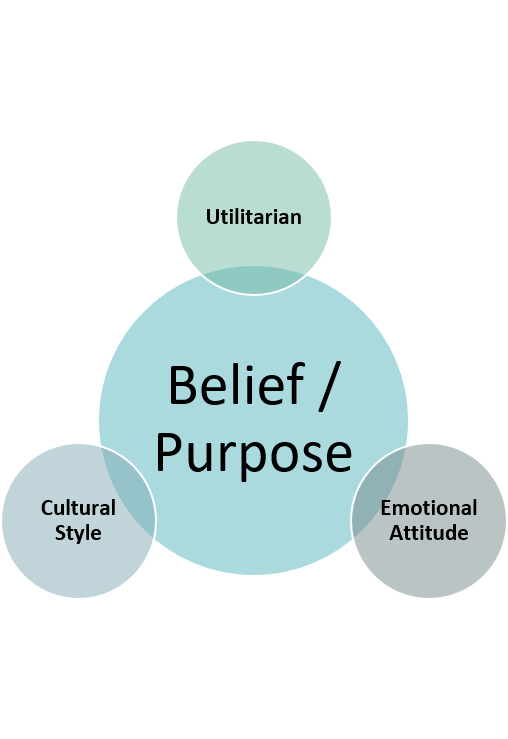
After analyzing hundreds of millions of users, we´ve discovered that customers mainly are seeking the following:
- Social proof
- Testimonials: Present your customers with targeted videos of happy customers, based on similar personas to them.
- Reviews: Enable your customers to easily see reviews that address their 4th product dimensions
- Community: Make it possible for your customers to look at and ask about the performance of your products
- Interact with custom experiences
- Quiz: An effective way to engage your audience, while dramatically increasing the chances of converting them into paying customers
- Chats: Provide easy access to interactions within chats, based on the customer journey stage
- Shop
- Purchase: Show the most relevant products that match their values and needs
Those 3 Ingredients must be present in all of our assets, which will increase conversion by multiple Xs.

Forget everything you know about the marketing funnel:
Awareness-Consideration-Conversion-Loyalty is outdated.
–Misconception: “Marketing funnel is linear, awareness-consideration-conversion-loyalty”
Reality isn’t linear today, it’s a mesh of interactions, it’s not a funnel but a conversion flow.
Therefore we need to adjust our marketing strategy to a new perspective, & build micro-interactions per individual persona groups, and generate a unique Customer Journey per user….
It’s critical to generate a major emotional burning with each interaction, therefore identifying the individual persona’s belief system is critical.
There are 4 main stages within the Journey:
- Exposed
- Anyone that was exposed once to your brand, message, content
- Exposed more than once
- Visited
- Visited your LP/HomePage
- Open
- Open Email
- Open SMS
- Open Chat
- Interacted
- Filled Quiz
- Became Lead (MQL/SQL)
- Watched video (Testimonial-Product-Webinar)
- Booked call


- Started Buying Process
- Add2cart
- Contact Page
- Shipping Page
- Demo request
- Checkout
- RFx
- Paying Customer
- Purchase once
- Purchased more than once
- Re-Exposed
- Any paying customer that was exposed once to your brand, message, content.

But this process is no longer linear, but a group of micro-interactions.
–Misconception: “Funnels are equal to all potential customers”
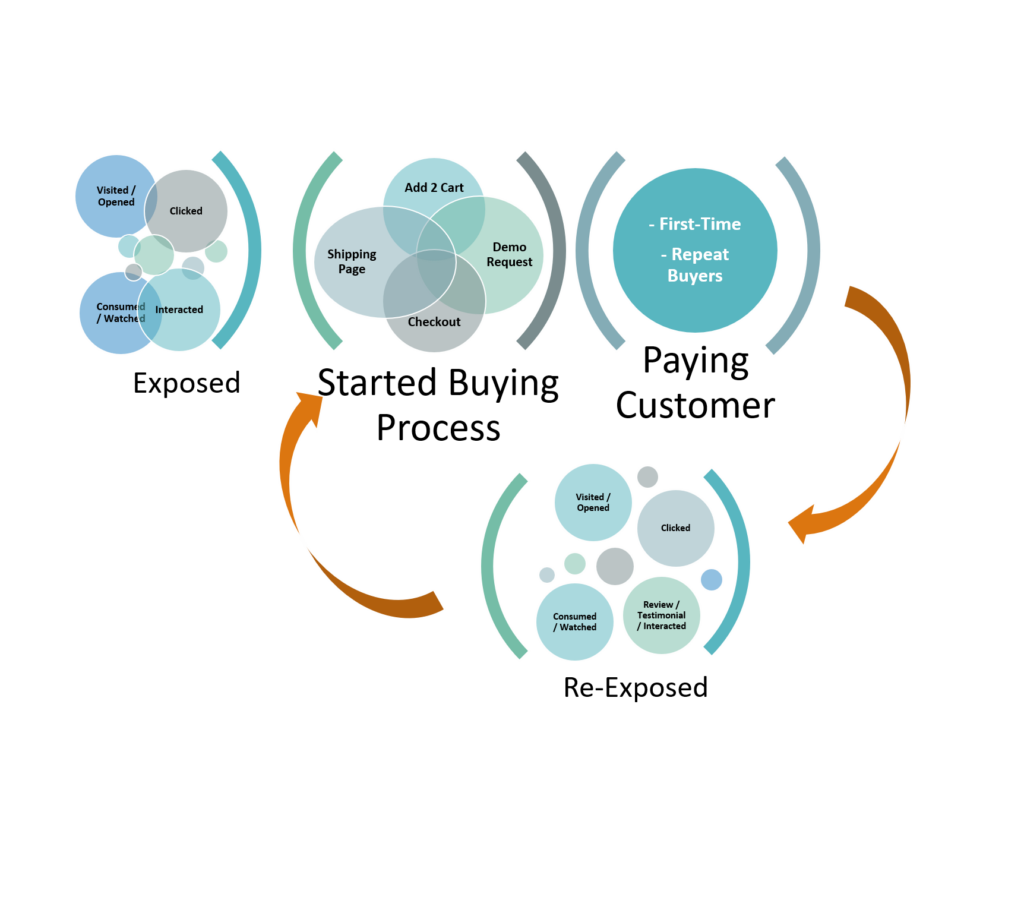
Increasing media investment must be related to the capacity of creating micro-interactions, and generating a custom journey for each persona.
–Misconception: “More media = growth”
This will enable your brand to generate many creatives at once, and nurture the potential customers accurately based on their belief/purpose & needs.

Everything is measurable, therefore is extremely common for companies to get lost and forget the important goals.
It’s key to set quantitative and qualitative goals such as:
- Visits to sells
- New Visits to interactions (Quiz, webinars views, leads, demo requests)
- Interactions to sell
- First purchase to returning
- Average order value
We should be able to narrow our priorities into answering questions such as:
- What are my customers engaging with?
- What are they looking for?
- Who are they?
- What are their needs/pains/fears?
- What moves them?
- Where are they stuck in the conversion stage?

Don’t match your HR reality to your goals.
–Misconception: “Business growth always depends on HR growth”
When all the challenges are solved by increasing headcount, then headcount won’t solve any issues.
Always the goal is to increase profits, not boosting revenues by increasing media investment.
Some companies are obsessed with growth so much that they proudly show revenue growth, while endangering their entire investors/cash flow just to achieve it.
Therefore companies must focus on increasing rapidly their profitability and revenues by narrowing endlessly their persona-based strategies, finding new micro-interactions opportunities fit for each persona.
An example will be generating a Quiz asking them their preferences, people love to share and talk about themselves, or asking a client to share a testimonial on how our product/service, positively impacted their life.
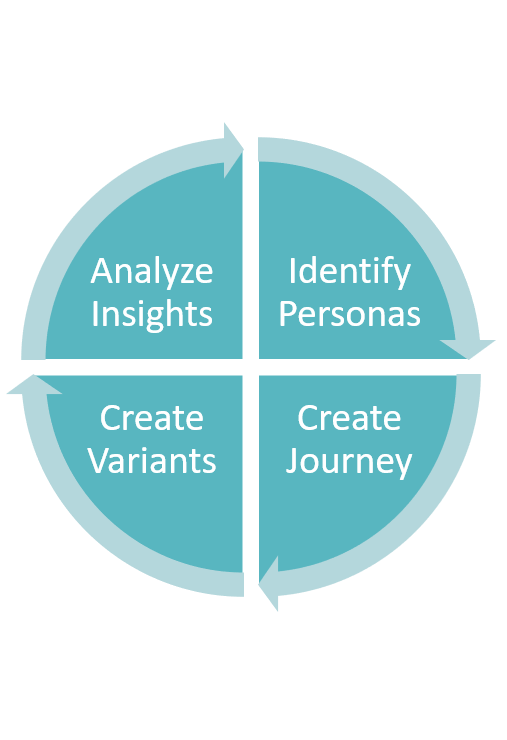
Calculate the score of every micro-interaction with your customers.
By segmenting personas and media investment according to the customer’s scoring, you will maximize your media investments.
Tip #5: Build a Satisfaction on demand machine.

SOD is the meeting point between customer needs & beliefs and product value.
Customer satisfaction at every touchpoint improves conversion rates dramatically.

1- Identify your personas touch points
-Creative per channel
-Landing page
-Email
-Call center
-Popup
-Bot
-Quiz
2-Create KPI for success micro-interactions
-CTR
-Engagement
-Attribution
-Revenue/Profit $
-Satisfaction
3- Use MassaPro methodologies to pick out the low-hanging fruit touchpoints.
-Emotional experiences-based interactions
4- Test your hypothesis about your customers
We narrowed how to apply an effective SOD, by following this guidelines:
- Identify your personas touch points
- Creative per channel
- Landing page
- Call center
- Popup
- Bot
- Quiz
- Create KPI for success micro-interactions
- CTR
- Engagement
- Attribution
- Revenue/Profit $
- Client Satisfaction Review
- Use MassaPro methodologies to pick out the low-hanging fruit touchpoints.
- Emotional experiences-based interactions
- Test your hypothesis about your customers
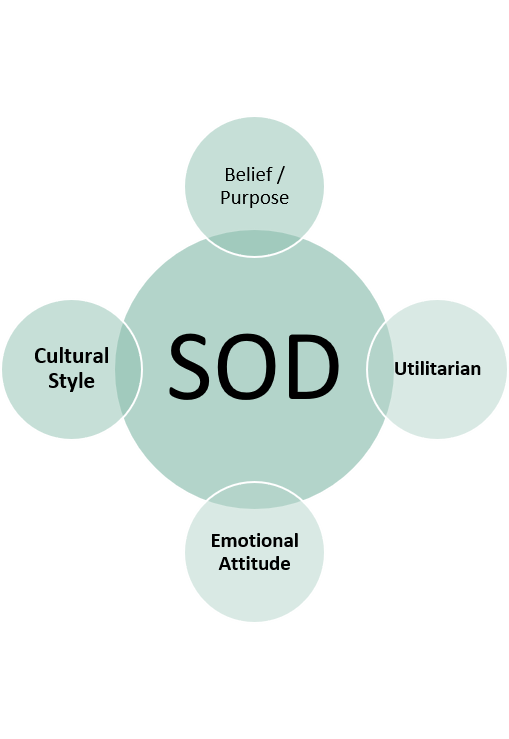

Constantly analyzed personas micro-interactions, and “walk in their shoes”.
The current super fast & changing reality, stretches our capabilities to adapt efficiently, generating many gaps in our assets and offers.
These guidelines will help us to efficiently move at a crazy speed:
- Test usability on a regular basis, make sure your website is performing well with outsource services, even the smallest distraction can hamper conversions
- Conduct satisfaction surveys for different personas, based on their micro-interactions, use every asset possible (Pop up, Bot, Quiz, SMS, Email and proactive live calls
- Monitor weekly, heat-maps and live videos, set KPI’s per audience
- Do competitive landscape analysis on monthly basis (price, offering, services, SLA’s, shipping time, payment options, payment terms, creative competitive research)
- Create KPI for service value based on MassaPro methodologies, a few examples:
- # of First-time visit to registration
- Time from First-time visit to registration
- # of First-time visit to quiz completion
- Time from First-time visit to quiz completion
- # of First-time visit to first time purchase
- Time from First-time visit to first time purchase

BI, BI, BI!
It’s key that all levels have easy and above the fold access to the main KPI’s that directly impact the Goal.
Each team must start building the BI following the following stages:
- Identify hands-on team KPI’s
- Create a simple 3 KPI’s system that allows each team member to constantly measure their performance
- Identify Cross-team impact
- Most KPI’s are a combination of many other SLA’s or KPI’s, in each dashboard the team member must have a clear visibility if a specific KPI is stuck/enhanced by an external team task/member.
- Identify C-Level KPI’s, show the management brief summary of the main business achievements, challenges and failures.
BI must include events that can easily show the real impact that each action/decision had in the company.

